We all have our Square Enix origin stories. Whether it was Final Fantasy VII Remake and Kingdom Hearts III, or Rad Racer and the original Final Fantasy, or perhaps — as I suspect is the case for a great many of us — somewhere in-between, there was a period of Square history that drew us in and never let us out. The game that changed my world was Final Fantasy VII. Glued as I was to that very first Sony PlayStation, I quickly gobbled up every JRPG I could find.
SaGa Frontier was one of them. Released alongside a river of noteworthy RPGs and a veritable ocean’s worth of exceptional video games, the 1998 cult classic was destined to find only modest success on Western shores. It was a strange game, as all prior SaGas were; those of us who played and enjoyed it had a somewhat difficult time explaining it even to fans of notable odd ducks such as Vagrant Story and Xenogears. It wasn’t about destined heroes, but rather, a loosely affiliated ensemble cast each with a story of their own. It wasn’t about leveling to 99, but organically mastering one’s inner talents. And it wasn’t a game about saving the world but learning to live in it.
It was also a bit of an ugly duck, with ill-explained gameplay systems galore, awkwardness around every corner, and the kind of mandatory tinkering that seemed quaint even 21 years ago.
Enter SaGa Frontier Remastered, Square Enix’s noble effort to not just prettify but genuinely improve one of the strangest yet most charming RPGs of its era.
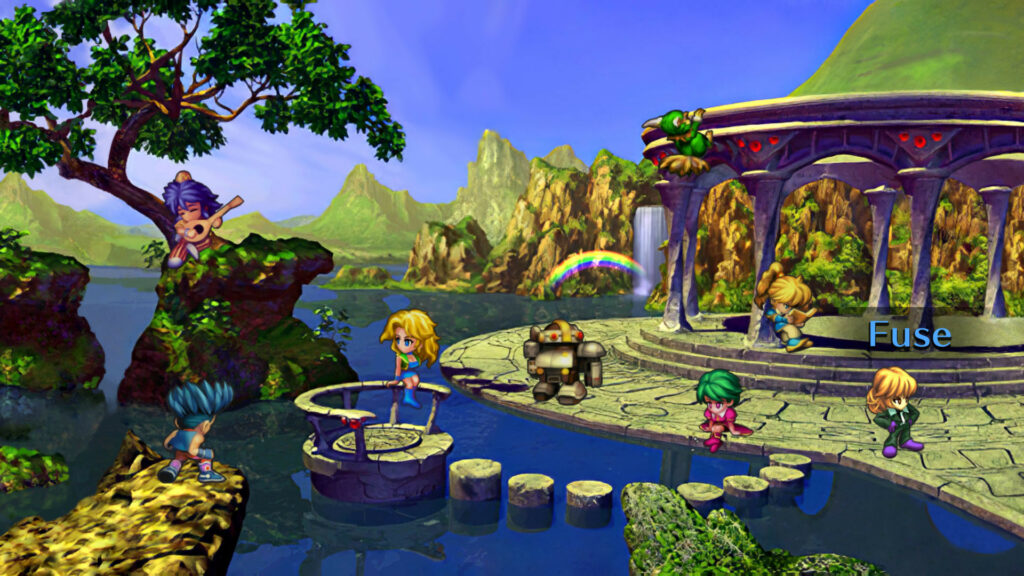
Player choice is core to the framework of the SaGa franchise. In SaGa Frontier, choice presents itself right from the get-go; the game’s opening screen immediately tasks you with selecting one of seven protagonist, beginning your journey with whomever you select. SaGa Frontier Remastered doesn’t miss a beat in illustrating its plethora of enhancements, adding an eighth protagonist who is unlockable as soon as one or more of the other characters’ stories are completed.
For newcomers to SaGa Frontier, I’ll quickly go over the original batch of seven. You have, in no particular order, a guy named Red who can transform into a superhero; a half-Mystic named Asellus; a fresh-out-of-mage-school bookworm named Blue; an ex-con and former supermodel named Emilia; a happy-go-lucky bard named — wait for it — Lute; a fox-like creature named Riki; and an ancient robot named T260G. The fresh face on the block is Fuse, an interplanetary patrolman who almost made it into the 1998 release before being cut for budgetary reasons.
SaGa Frontier launched to a great deal of praise in Japan but a decidedly more mixed Western reception. Much of the game’s critical apprehension at the time stemmed from its Free Scenario System, which flew in the face of the common and conventional approach to JRPG progression in which a singular protagonist gathers allies whilst traveling the world along a predominantly linear path. To be sure, many of my favorite games follow that structure for a reason: it works. More experimental fare can be hit-or-miss, and in 1998, I reckon some reviewers simply weren’t ready for it. The notion of completing each character’s storyline separately, and the fact that some stories could be finished in a matter of minutes (though others are a good deal longer), was downright bizarre back then and remains a novelty today.
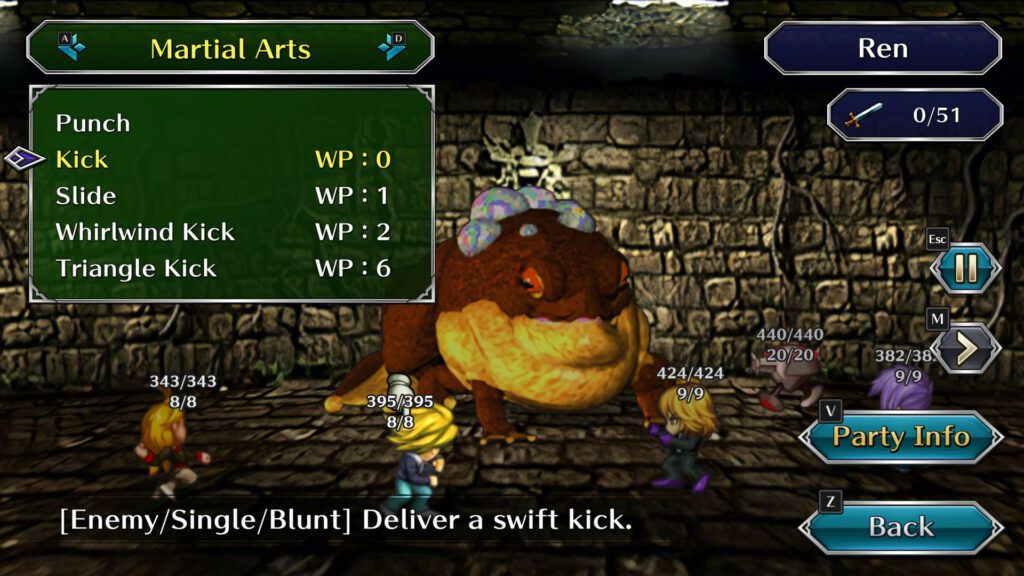
But to be fair to my games-reviewing predecessors, SaGa Frontier didn’t exactly make its rarer avenue easy to handle. It was easy to hop into a story and feel overwhelmed by its sense of freedom, making for a murky grasp of where to go, what to do, who to speak with, and how to learn special attacks along the way.
Remastered alleviates some of this tedium but leaves certain things untouched. For one, there is now a chart for each character that tracks the various stages of their journey that they have taken thus far, which helped me focus and feel properly oriented throughout the adventure. Newly-added map icons designating exits and entryways shaved quite a few moments off my Remastered replay, as even with the shinier visuals afforded by modern hardware, the game’s backgrounds still come across as a touch too homogenous for easy navigation. Both inside and outside of battle, players can increase the game’s speed for a breezier time across large maps.
These things add up. While I can’t speak definitively as to how someone who’s never played SaGa Frontier will react to its cumbersome and at times confusing nature, I’m confident in saying you’ll have a better onboarding process than I did back in the day. More than anything, Square Enix seems to have emphasized modernizing the elements of SaGa Frontier that were poorly explained or involved far too much memorization when a simple graphical representation of a particular gameplay mechanic could have helped tremendously.
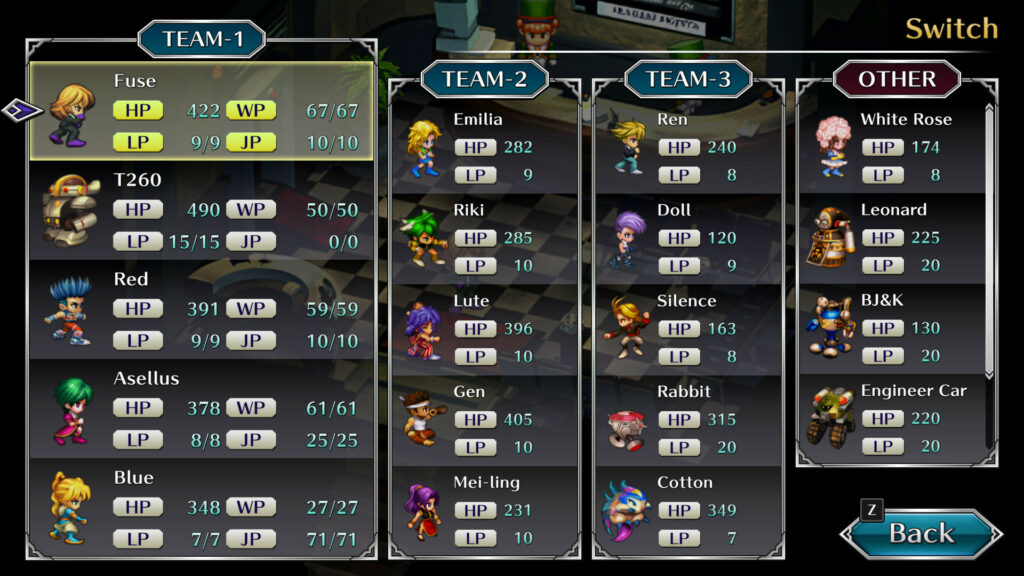
To capitalize on that statement, let me cite an example. There’s no such thing as MP (Magic Points) in SaGa Frontier, but there is WP — Weapon Points. Keeping watch for how much WP you can spend in a given battle can be the difference between life and death, especially in a game as frequently unforgiving as this one. To that end, acquainting yourself with your range of weaponry is critical, and each weapon has its own stats which will strongly factor into your most elementary of RPG decisions: what to wear. This is all well and good, but until now, charting weapon statistics has involved a great deal of back-and-forth menu interplay and at least one guaranteed headache per play session. SaGa Frontier Remastered solves an obvious problem with an obvious solution. Weapons now have their statistics clearly listed at all times, which segues neatly into an array of auto-equip options sorely needed in the original.
SaGa Frontier and its ilk spun off more from the second Final Fantasy than the first, with series producer Akitoshi Kawazu borrowing liberally from Final Fantasy II‘s divisive character growth methodology. Rather than leveling up, stat values will rise apropos to what orders the player gives their party during combat. Strength will increase when Red smashes skulls with his martial arts and swordplay. Magic will tick skyward as Blue casts spell after spell. The “FFII approach” often scares off would-be buyers, so I’ll emphasize here that Kawazu and his team have consistently proven themselves worthy with complex and strategically oriented battle systems, and SaGa Frontier Remastered only further incentivizes thoughtfulness by tossing in its eighth character and expanding upon the story path for one of the other seven. Enemies will no doubt slaughter you if you aren’t paying attention; lavish combos between two, three, and sometimes even five party members are the big tickets to success, and keeping everyone breathing for long enough to reach that point requires a genuine understanding of the craft.
Upon reflection, I think that’s one of the things that attracted me to SaGa Frontier in the first place. So many otherwise-terrific JRPGs admittedly involve much mashing of the “Attack” command and the occasionally popped potion or curative spell. Here, new skills are learned at a rapid pace and almost all of them have their distinctive place on the battlefield. Synergizing these skills across your party during heated boss fights is a more rewarding process than much of what else was on offer from other Square Enix gems in ’98.
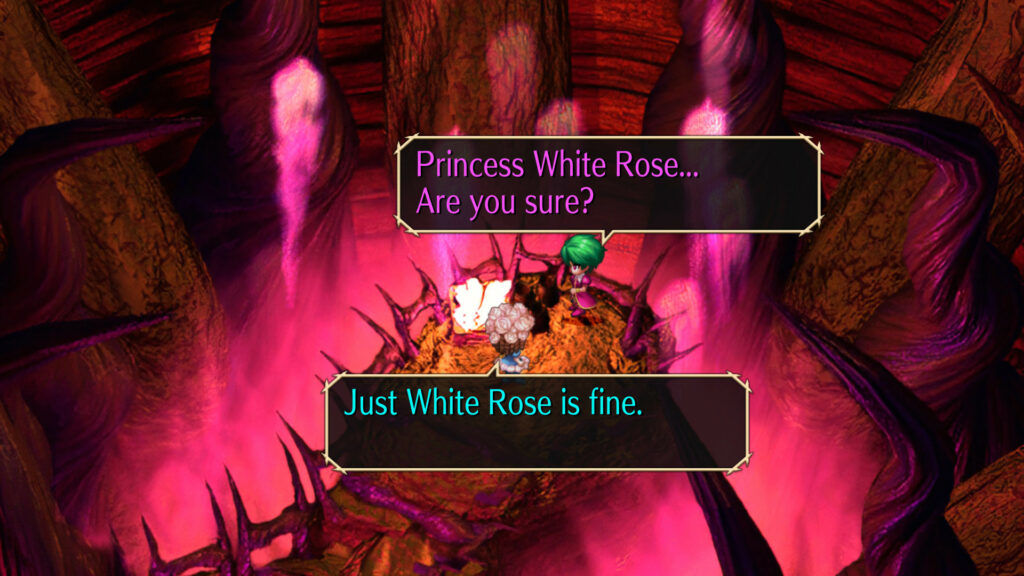
If you’re a dyed-in-the-wool lifelong SaGa fan, impatiently wondering whether or not I think it’s worth dropping more cash on this remaster, I’m pleased to say my answer is yes. The sprites aren’t the most vivid in the world, but they’re an improvement over a formerly messy aesthetic. Muddied textures are now clean, including backgrounds that downright shimmer relative to their older counterparts. (One must sigh, then, at the fact that certain other Square Enix remasters, including Final Fantasy IX‘s, are chock full of unmodified backgrounds that fade into bland obscurity behind significantly improved character models.)
Beyond the graphical overhaul and quality-of-life perks, it’s the addition of eighth hero Fuse that sells the package. His own little saga is something of a celebration for the game itself, with cheeky metacommentary and enough quirks to liven up a solar system that was already fairly lively, to begin with.
Being a SaGa fan has been more rewarding in recent years than it had been for a very long time. Romancing SaGa 2 and 3 finally received localizations in 2017, SaGa Scarlet Grace is a rad and (relatively) new installment, SaGa: The Final Fantasy Legend packs all three of the oldest entries in the franchise into one digital download, and now SaGa Frontier Remastered has proven to be the definitive version of a great, if obtuse, JRPG.
Come for the kitschy automobiles and deadly galactic robots. Stay for the meaty gameplay mechanics and Fuse’s delicious satire. Square is shining a surefire new light on an underappreciated classic with SaGa Frontier Remastered.
Disclaimer: Review code provided by the publisher Square Enix.
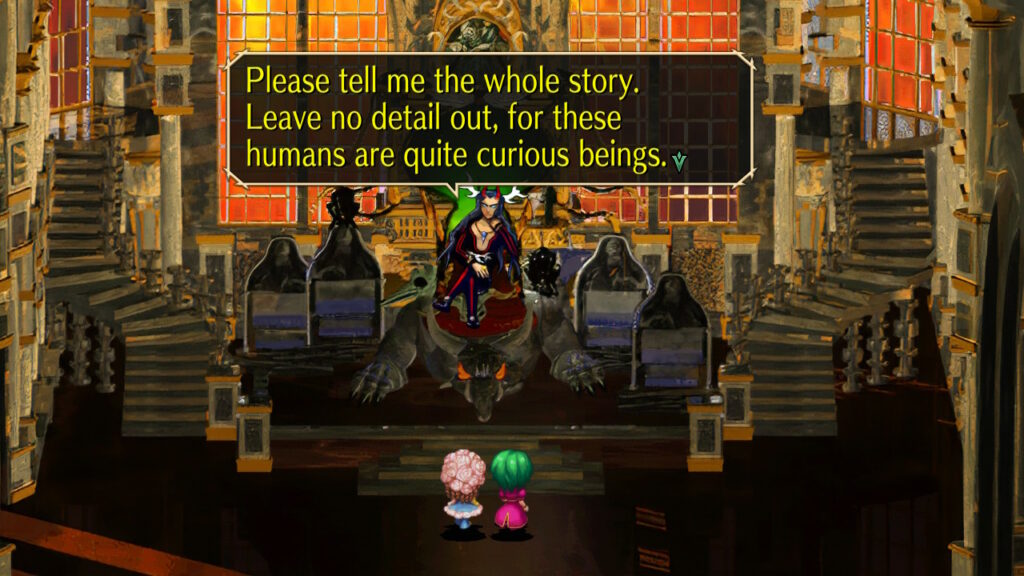
Recent Comments